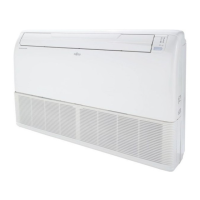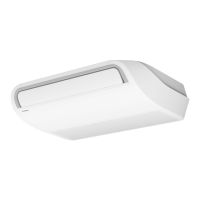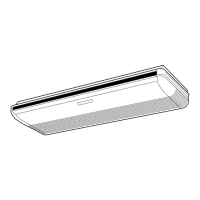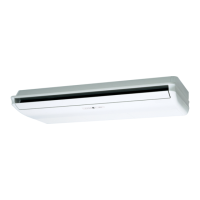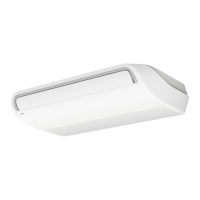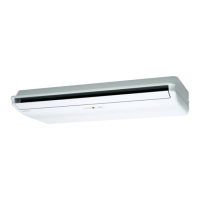22. VARIOUS PROTECTIONS
1. DISCHARGE GAS TEMPERATURE OVER RISE PREVENTION CONTROL
The discharge gas thermosensor (discharge thermistor : Outdoor side) will detect discharge gas
temperature.
When the discharge temperature becomes higher than ,the compressor frequency
is decreased 20rps, and it continues to decrease the frequency for 20rps every 120 seconds until
the temperature becomes lower than .
When the discharge temperature becomes lower than ,the control of the compressor
frequency is released.
When the discharge temperature becomes higher than ,the compressor stops.
When the discharge temperature becomes lower than 80°C ,the compressor operates.
2. CURRENT RELEASE CONTROL
01-30
The compressor frequency is controlled so that the outdoor unit input current does not exceeds
the current limit value that was set up with the outdoor temperature.
The compressor frequency returns to the designated frequency of the indoor unit at the time
when the frequency becomes lower than the release value.
3. ANTI-FREEZING CONTROL (Cooling mode)
When the indoor unit heat exchanger and
2-way valve temperature becomes lower than ,the compressor frequency
is decreased 20rps, and it continues to decrease the frequency for 20rps every 120 seconds until
the temperature becomes higher than .
This operation is not released until both the temperature of the indoor unit heat exchanger and
2-way valve temperature exceed the release temperature.
(Table 17 : Anti-freezing Protection Operation / Release Temperature)
AO*G18/ 24LAT3
105°C 95°C 110°C
Tenperrature
AO*G30LAT4
Tenperrature Tenperrature
110°C 100°C 115°C
(Table 16 : Discharge Temperature Over Rise Prevension Control / Release Temperature)
12°C
3°C 2°C 6°C
Temperature Temperature
3°C 2°C 13°C
Outside air
Temperature
Indoor Heat Ex.
Temperature
2-way valve
Temperature
Indoor Heat Ex.
Temperature
2-way valve
Temperature
12°C
5°C
12°C
=
>
<
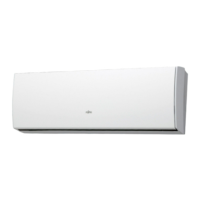
